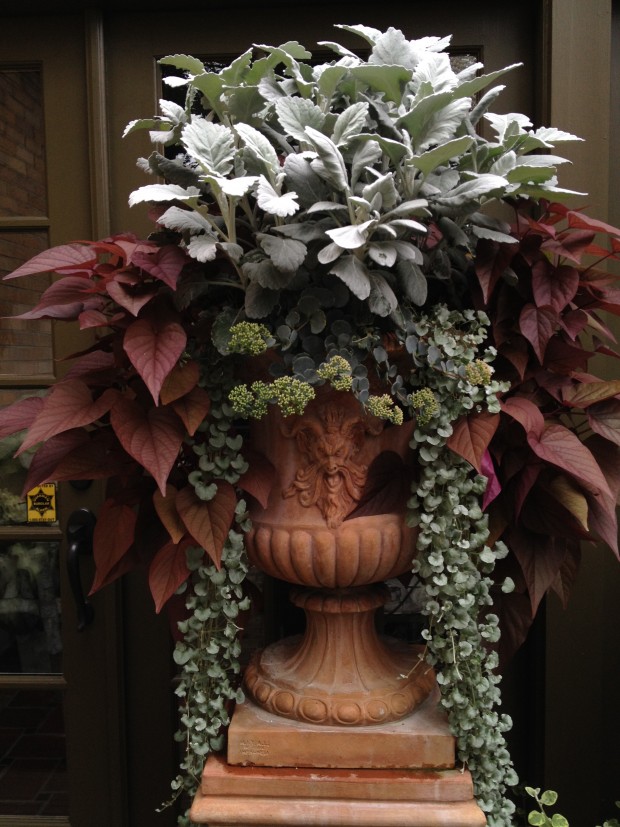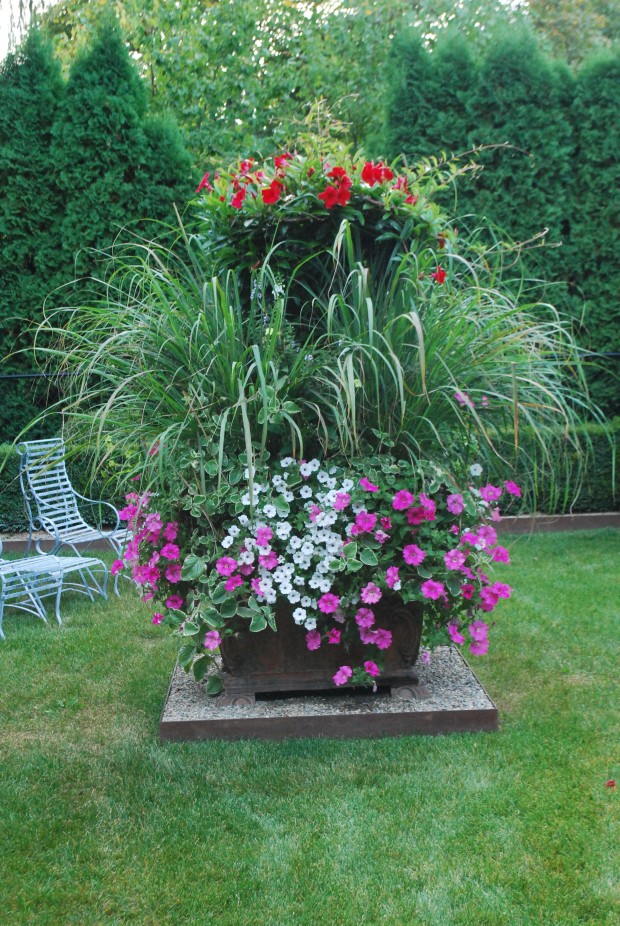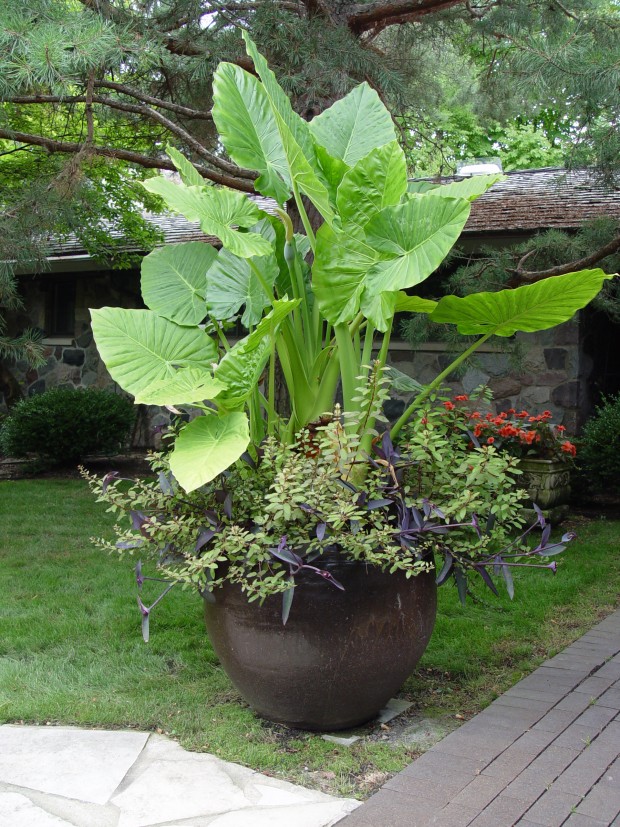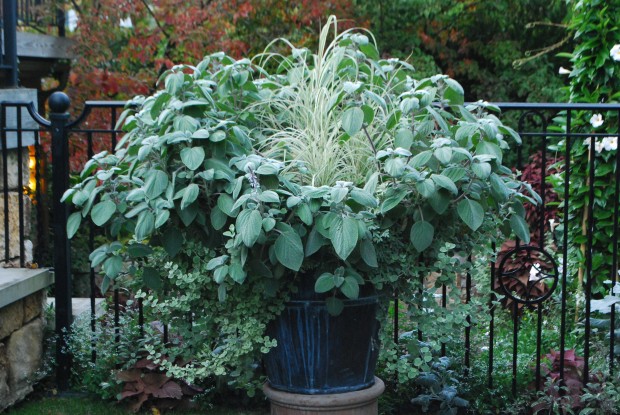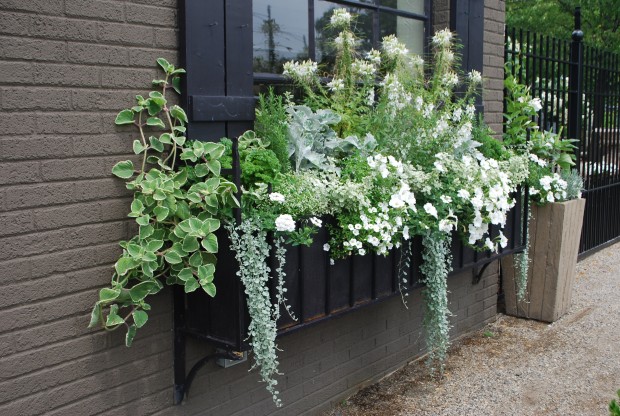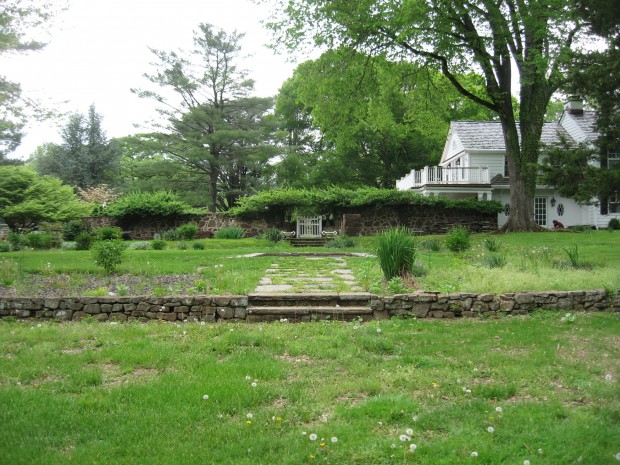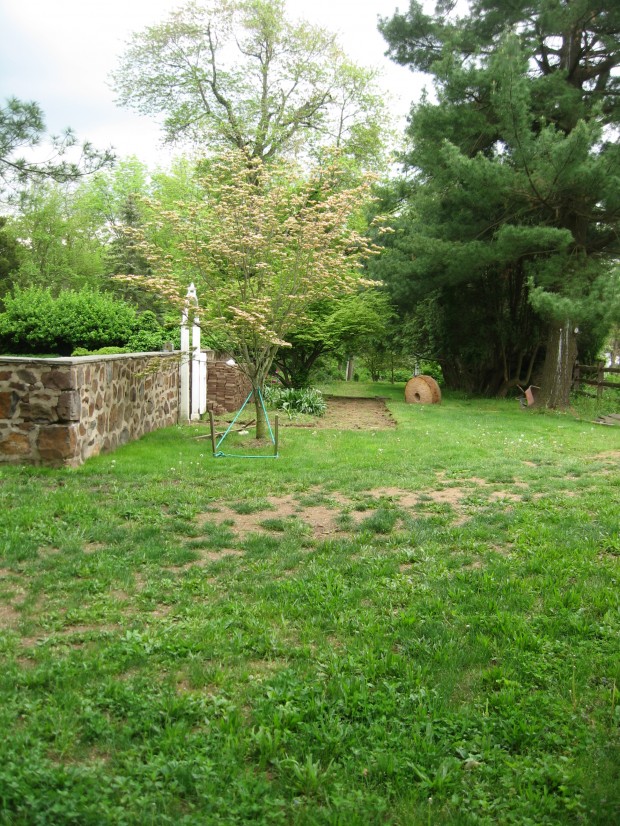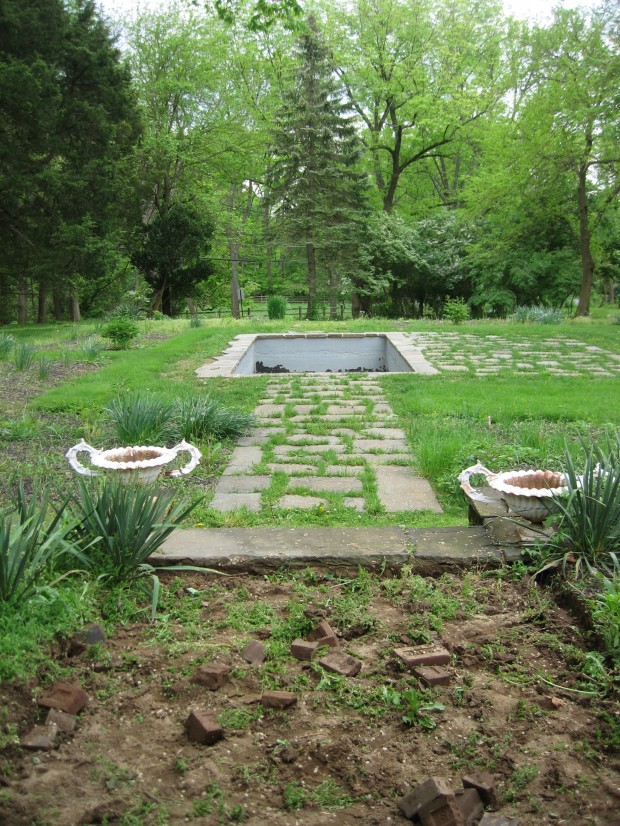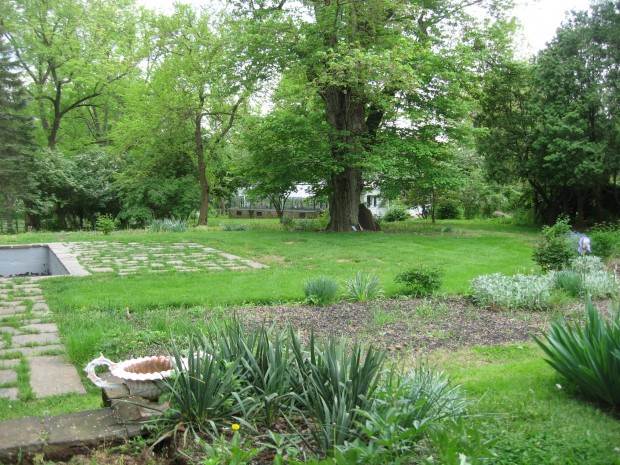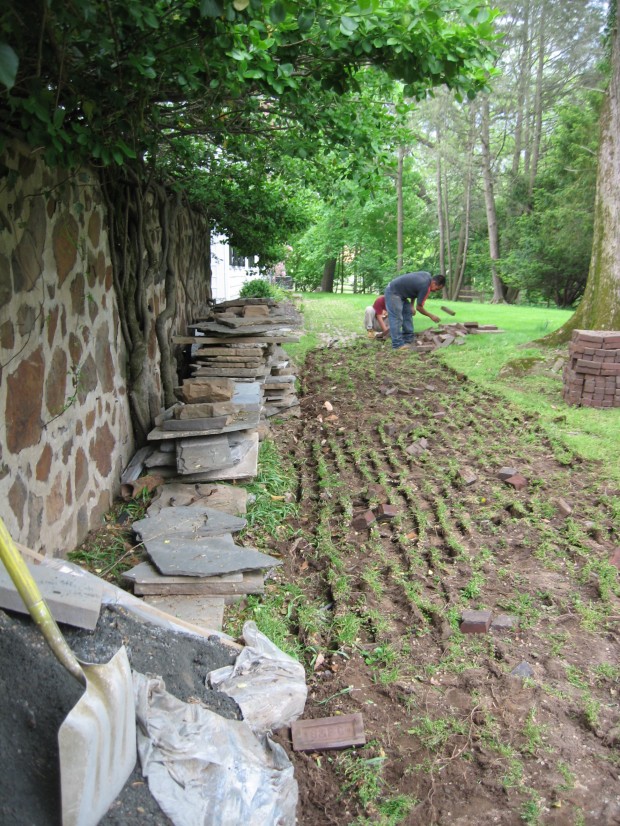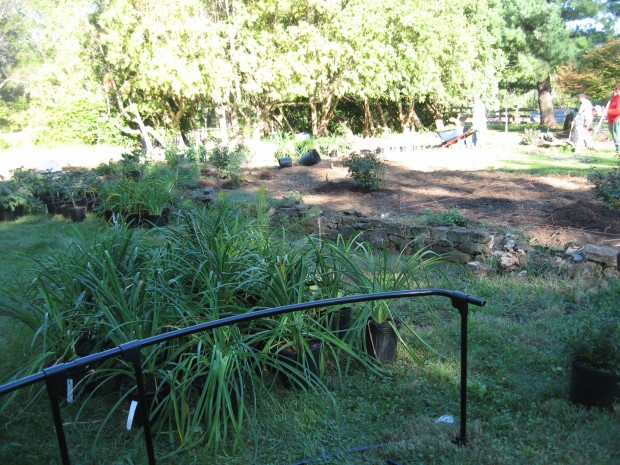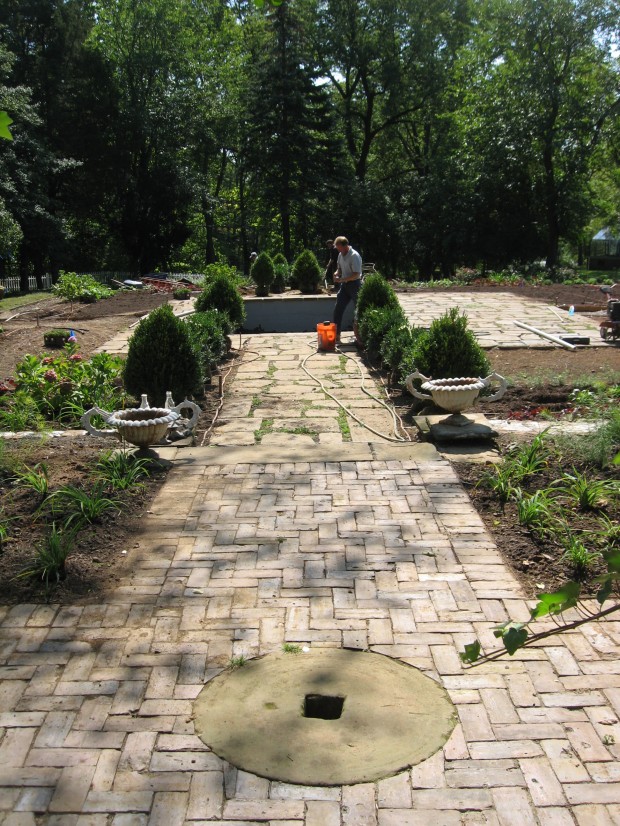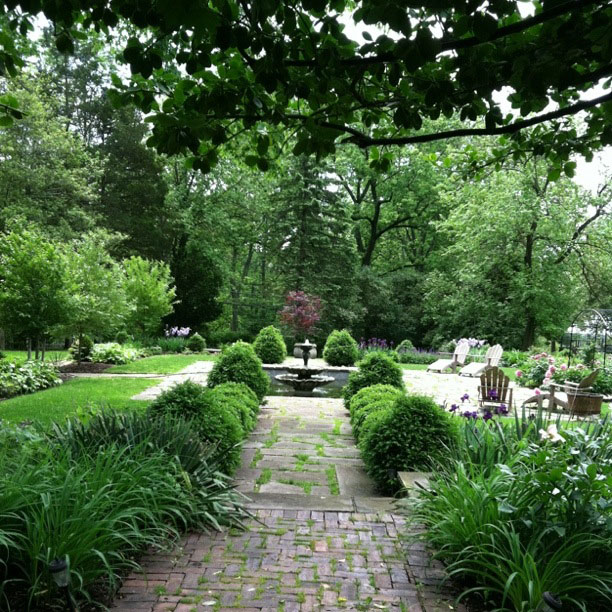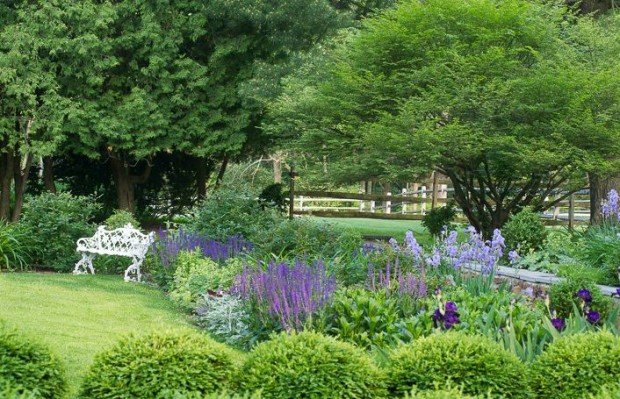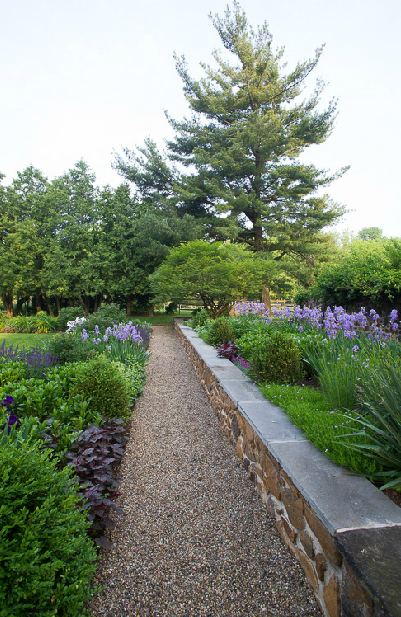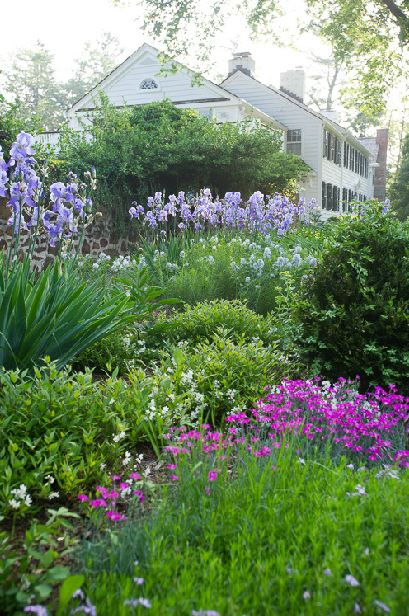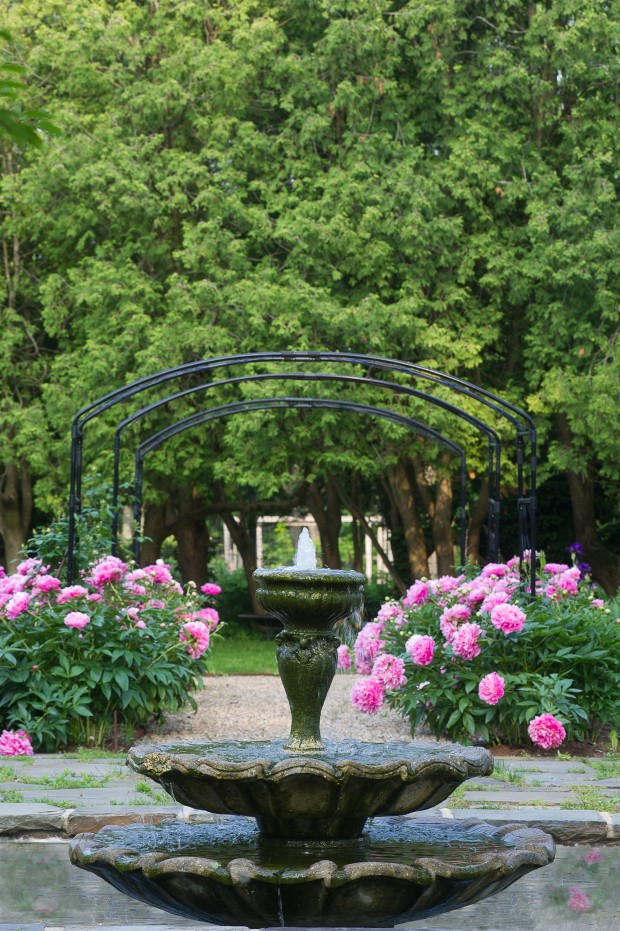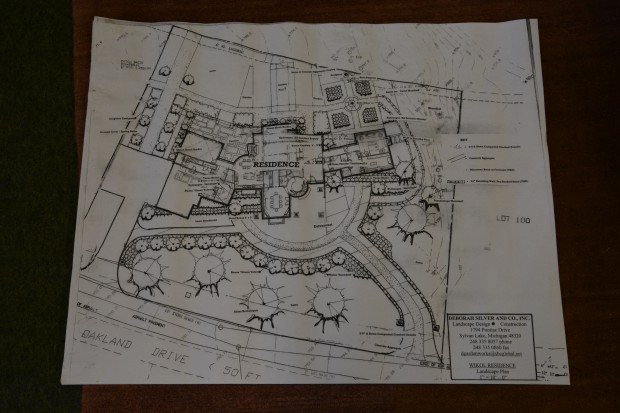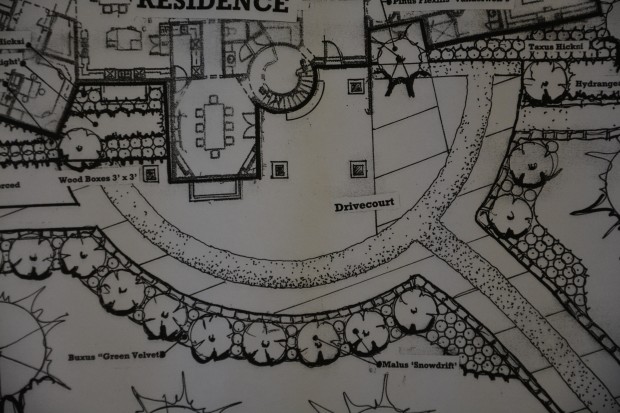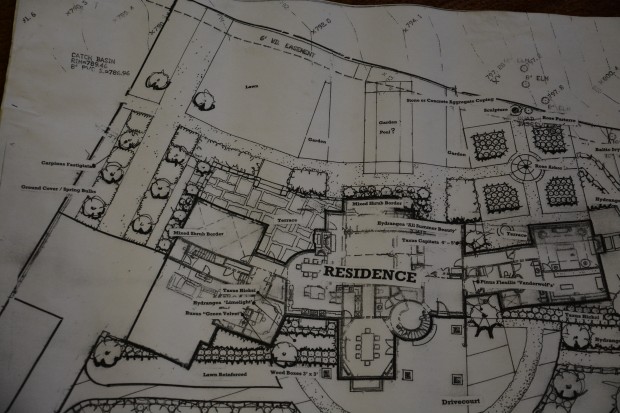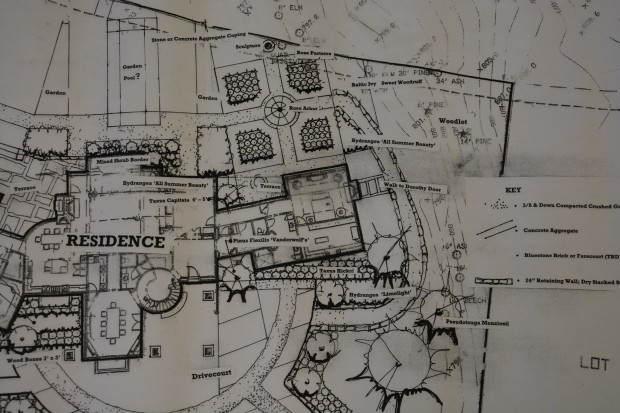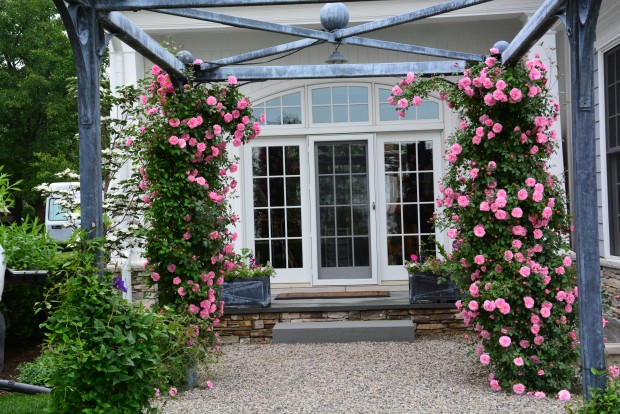 The very best part of doing containers for clients at the last of a landscape installation for a new house is the chance I might be able to to come back the following year. The opportunity to come back means I can watch, and be part of how that landscape settles in and prospers. The summer container planting comes around once a year, every year. In the best of all possible worlds, the process of the landscape design and installation results in a relationship that is on going. Planting seasonal containers is ongoing. I was happy to be invited back. The John Davis roses, which were part of the original landscape installation, are just about to the roof of the pergola, this June of year 3.
The very best part of doing containers for clients at the last of a landscape installation for a new house is the chance I might be able to to come back the following year. The opportunity to come back means I can watch, and be part of how that landscape settles in and prospers. The summer container planting comes around once a year, every year. In the best of all possible worlds, the process of the landscape design and installation results in a relationship that is on going. Planting seasonal containers is ongoing. I was happy to be invited back. The John Davis roses, which were part of the original landscape installation, are just about to the roof of the pergola, this June of year 3.
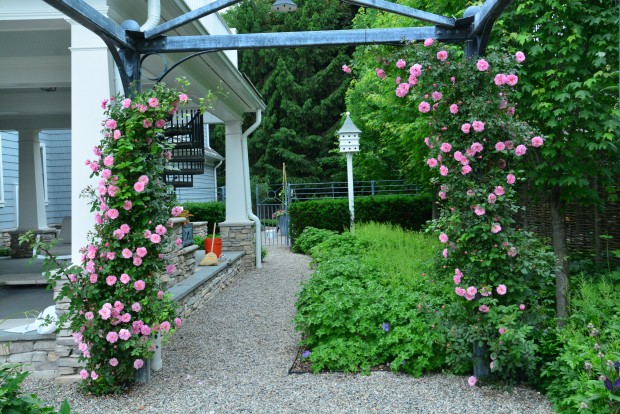 Any new landscape comes with troubles. What you thought would be perfectly happy in this spot refuses to perform. What seemed like a reach takes hold like you never imagined. Anyone who gardens knows trouble-and how that trouble can be difficult to foresee. This property fronts on a lake. The very heavy clay soil refuses to dry out. We had no end of troubles, getting this landscape to take hold. It is difficult, and takes time, to establish plants on a clay based soil. In the middle of year 2, a daunting year 2, we were making progress. Year two was not my favorite. It just had to be lived through. But once the plants take hold, they go for broke. Year 3 is looking good. Along this path to the side yard, each Rozanne geranium is the size of a small shrub. The astilbes are loaded with flower spikes. The yews have settled in, and are lush and dark green. And the roses-well, you can see for yourself.
Any new landscape comes with troubles. What you thought would be perfectly happy in this spot refuses to perform. What seemed like a reach takes hold like you never imagined. Anyone who gardens knows trouble-and how that trouble can be difficult to foresee. This property fronts on a lake. The very heavy clay soil refuses to dry out. We had no end of troubles, getting this landscape to take hold. It is difficult, and takes time, to establish plants on a clay based soil. In the middle of year 2, a daunting year 2, we were making progress. Year two was not my favorite. It just had to be lived through. But once the plants take hold, they go for broke. Year 3 is looking good. Along this path to the side yard, each Rozanne geranium is the size of a small shrub. The astilbes are loaded with flower spikes. The yews have settled in, and are lush and dark green. And the roses-well, you can see for yourself.
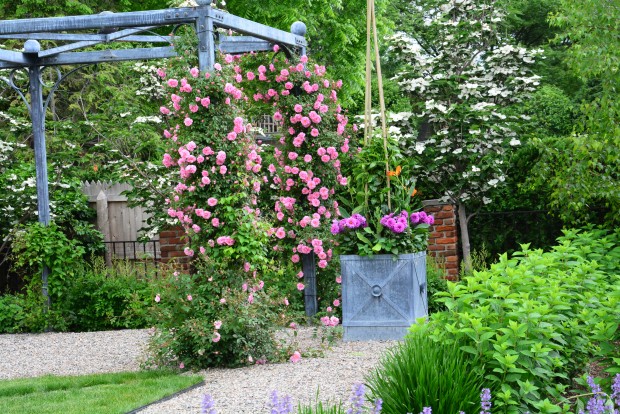 John Davis is a climbing rose which is incredibly vigorous and long lived. If pink flowers are to your liking, this rose will reward you with steady growth and lots of roses. I have a client withe John Davis roses that are better than 20 years old. It is undeniably hardy-bear in mind these roses on planted on the lake side, and subject to terrific winds and cold in the winter. Our last two winters were fiercely cold. I see damage to plants everywhere from those vicious winters. These roses never skipped a beat. Planting this summer annual container next to this John Davis in glorious bloom-what a treat.
John Davis is a climbing rose which is incredibly vigorous and long lived. If pink flowers are to your liking, this rose will reward you with steady growth and lots of roses. I have a client withe John Davis roses that are better than 20 years old. It is undeniably hardy-bear in mind these roses on planted on the lake side, and subject to terrific winds and cold in the winter. Our last two winters were fiercely cold. I see damage to plants everywhere from those vicious winters. These roses never skipped a beat. Planting this summer annual container next to this John Davis in glorious bloom-what a treat.
 This landscape has begun to come into its own. I did not know this, until the moment I got there with a truckload of flowers for the pots. The best part of spending the day here planting the containers here was the pure pleasure of experiencing a landscape and garden that has rooted in and has settled down. Everything is breathing, regularly. There is new growth on every plant, from the yews, to the Venus dogwoods, to the Himalayan white barked birch, to the hydrangeas-to the columnar red maples. The landscape is thriving. The heart of it is beating regularly, and strongly.
This landscape has begun to come into its own. I did not know this, until the moment I got there with a truckload of flowers for the pots. The best part of spending the day here planting the containers here was the pure pleasure of experiencing a landscape and garden that has rooted in and has settled down. Everything is breathing, regularly. There is new growth on every plant, from the yews, to the Venus dogwoods, to the Himalayan white barked birch, to the hydrangeas-to the columnar red maples. The landscape is thriving. The heart of it is beating regularly, and strongly.
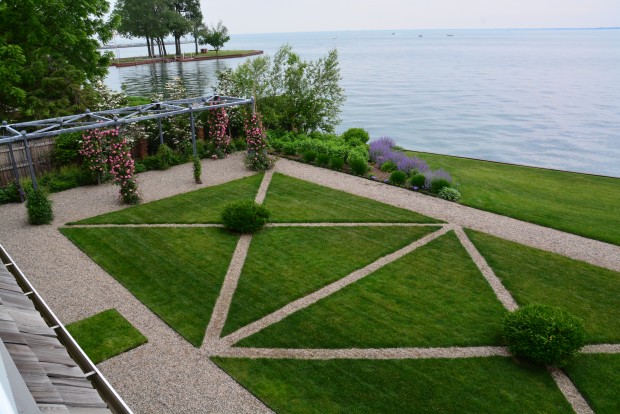 The boxwood dots in the lawn have put on a lot of weight. That dark green I see everywhere is a healthy green. How is my client managing a landscape on soil that does not drain? She manages, as she tends to the landscape. Her thoughtful work is obvious. The views from the second story deck was beautiful. That beauty is not of my doing, some three years after the original installation. It is hers. All a garden needs is for someone to take ownership, like she has.
The boxwood dots in the lawn have put on a lot of weight. That dark green I see everywhere is a healthy green. How is my client managing a landscape on soil that does not drain? She manages, as she tends to the landscape. Her thoughtful work is obvious. The views from the second story deck was beautiful. That beauty is not of my doing, some three years after the original installation. It is hers. All a garden needs is for someone to take ownership, like she has.
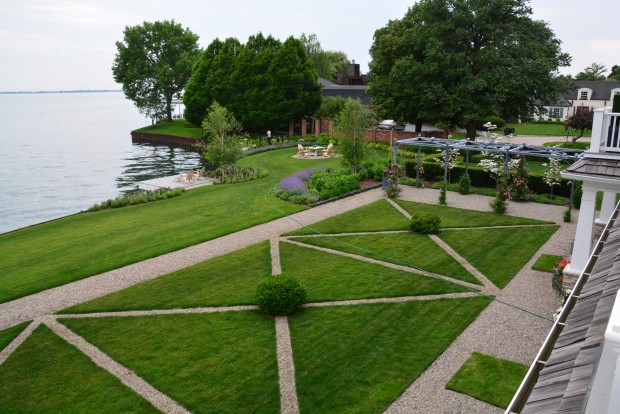 I did plant lots of containers for her today. She wanted orange geraniums, and nasturtiums. I planted them wherever I could. Next week I will plant her cutting flower boxes. We have had incredibly cold and rainy weather. I have postponed planting the zinnias and the sunflowers until next week.
I did plant lots of containers for her today. She wanted orange geraniums, and nasturtiums. I planted them wherever I could. Next week I will plant her cutting flower boxes. We have had incredibly cold and rainy weather. I have postponed planting the zinnias and the sunflowers until next week.
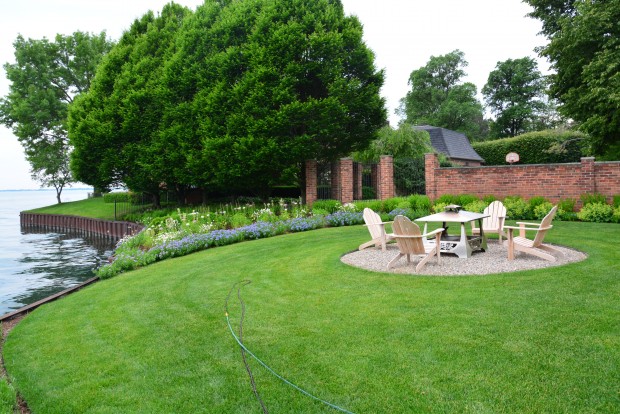 The wet meadow is loaded with amsonia Blue Ice-it is in bloom now. The shadier portions are planted with species monarda, and northern sea oats-Chasmanthium latifolium. The fact that it seeds is all to the good. That wet meadow will dry sometime soon. Cleome and sonata cosmos will provide color in this garden all the summer season long.
The wet meadow is loaded with amsonia Blue Ice-it is in bloom now. The shadier portions are planted with species monarda, and northern sea oats-Chasmanthium latifolium. The fact that it seeds is all to the good. That wet meadow will dry sometime soon. Cleome and sonata cosmos will provide color in this garden all the summer season long.
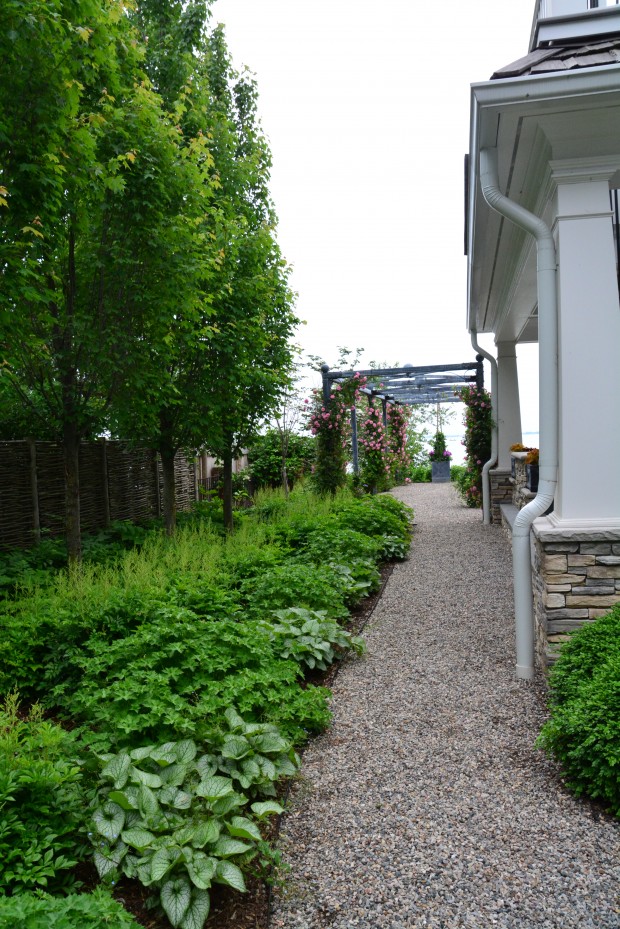 Though my trip here was to plant containers, how the landscape has taken hold has my attention. Plants in the right place is all the work of a garden-and all of the pleasure.
Though my trip here was to plant containers, how the landscape has taken hold has my attention. Plants in the right place is all the work of a garden-and all of the pleasure.
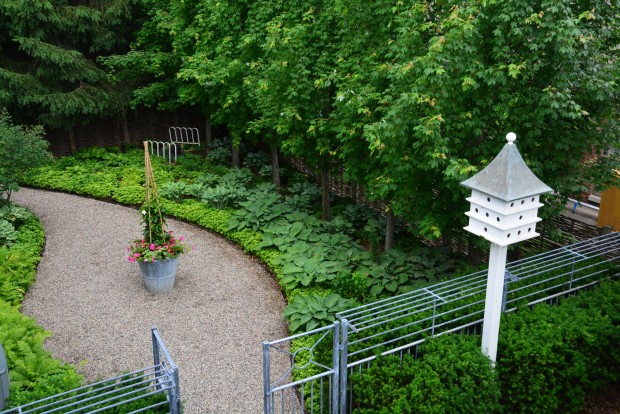 Willy’s garden is presided over by a big group of columnar red maples. Their foliage is lush this year – finally. The hostas are fanning out. In the front of the house, the peonies were full of blooms. The birch are growing. The katsura espaliers leafed out beyond all belief.
Willy’s garden is presided over by a big group of columnar red maples. Their foliage is lush this year – finally. The hostas are fanning out. In the front of the house, the peonies were full of blooms. The birch are growing. The katsura espaliers leafed out beyond all belief.
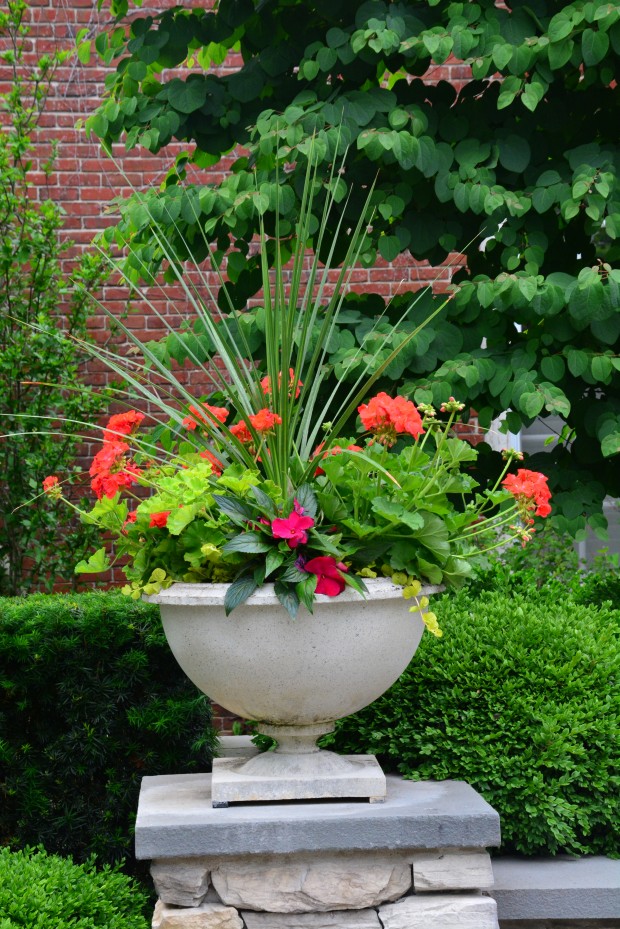 All of the containers featured orange in one form or another. I was pleased that this urn was stuffed with annual plants in a relaxed fashion. My crews do an amazing job of arranging all the plants that are scheduled to go into a container in a lively, lovely, and unpretentious way. From the start.
All of the containers featured orange in one form or another. I was pleased that this urn was stuffed with annual plants in a relaxed fashion. My crews do an amazing job of arranging all the plants that are scheduled to go into a container in a lively, lovely, and unpretentious way. From the start.
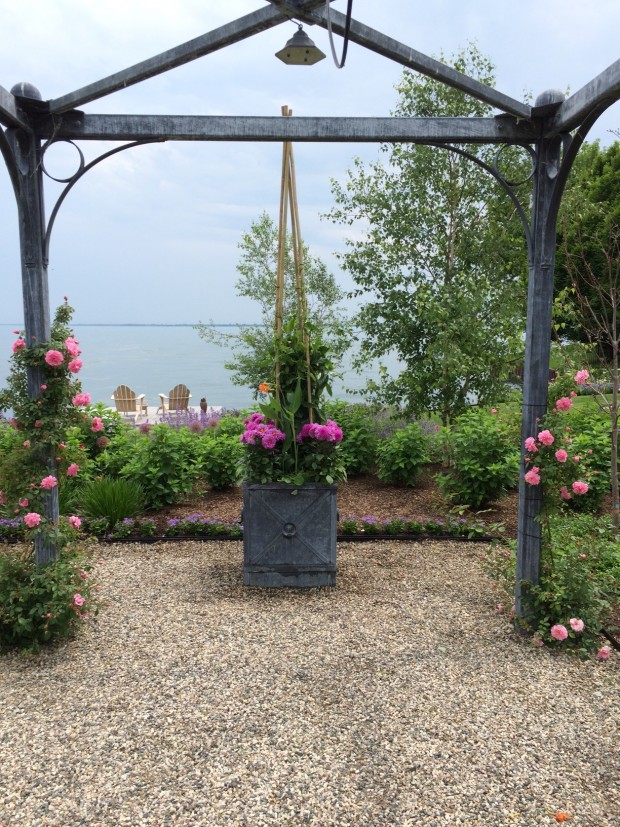 I cannot really convey with words what it meant to walk on to a property with a landscape wrought by a relationship with a very special client that seems happy in most every regard. I ws so pleased with everything I saw. My working life right now is busy-jammed packed and intense. Most days I am up at 4:30 am, and drifting home at 6pm. This seasonal planting settled me right down. Thanks, Harriet. This landscape is growing just as you would want it to. I am sure I heard that growing going on.
I cannot really convey with words what it meant to walk on to a property with a landscape wrought by a relationship with a very special client that seems happy in most every regard. I ws so pleased with everything I saw. My working life right now is busy-jammed packed and intense. Most days I am up at 4:30 am, and drifting home at 6pm. This seasonal planting settled me right down. Thanks, Harriet. This landscape is growing just as you would want it to. I am sure I heard that growing going on.


